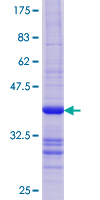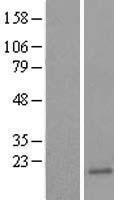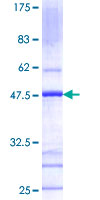order histories, retained contact details for faster checkout, review submissions, and special promotions.
Forgot password?
order histories, retained contact details for faster checkout, review submissions, and special promotions.
Locations
Orders Processing,
Shipping & Receiving,
Warehouse
2 Shaker Rd Suites
B001/B101
Shirley, MA 01464
Production Lab
Floor 6, Suite 620
20700 44th Avenue W
Lynnwood, WA 98036
Telephone Numbers
Tel: +1 (206) 374-1102
Fax: +1 (206) 577-4565
Contact Us
Additional Contact Details
order histories, retained contact details for faster checkout, review submissions, and special promotions.
Forgot password?
order histories, retained contact details for faster checkout, review submissions, and special promotions.
HR6B / UBE2B
ubiquitin-conjugating enzyme E2B
Accepts ubiquitin from the E1 complex and catalyzes its covalent attachment to other proteins. In association with the E3 enzyme BRE1 (RNF20 and/or RNF40), it plays a role in transcription regulation by catalyzing the monoubiquitination of histone H2B at 'Lys-120' to form H2BK120ub1. H2BK120ub1 gives a specific tag for epigenetic transcriptional activation, elongation by RNA polymerase II, telomeric silencing, and is also a prerequisite for H3K4me and H3K79me formation. In vitro catalyzes 'Lys-11'-, as well as 'Lys-48'- and 'Lys-63'-linked polyubiquitination. Required for postreplication repair of UV-damaged DNA. Associates to the E3 ligase RAD18 to form the UBE2B-RAD18 ubiquitin ligase complex involved in mono-ubiquitination of DNA-associated PCNA on 'Lys-164'. May be involved in neurite outgrowth.
| Gene Name: | ubiquitin-conjugating enzyme E2B |
| Synonyms: | UBE2B, E2 protein, E2-17kDa, HR6B, RAD6B, Ubiquitin carrier protein B, Ubiquitin-protein ligase B, HHR6B, RAD6 homolog B, UBC2 |
| Target Sequences: | NM_003337 NP_003328.1 P63146 |






If you do not find the reagent or information you require, please contact Customer.Support@LSBio.com to inquire about additional products in development.









